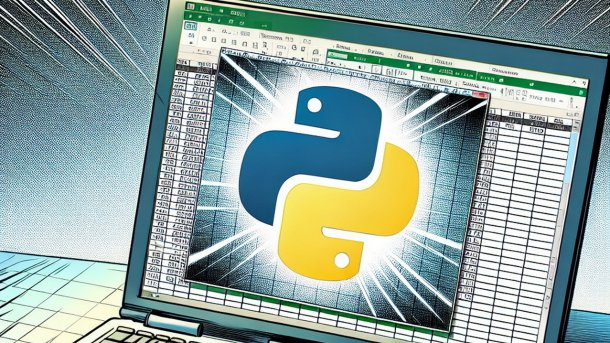
Embracing Innovation: The New Era of Programming with Python in Excel
As technology continues to advance, Microsoft has embraced the potential of programming languages in enhancing productivity and analysis within its applications. One of the most exciting developments recently has been the introduction of Python in Excel, available for Microsoft 365 users. This article explores this new feature, alongside initiatives contributing to female empowerment in tech through educational programs.
 Python enables powerful capabilities within Excel.
Python enables powerful capabilities within Excel.
The Integration of Python in Excel
Initially announced in a public preview in August 2023, the integration of Python into Excel reflects a growing demand for sophisticated data analysis directly within the platform. This feature allows users to write Python code directly into an Excel worksheet, facilitating complex calculations involving large datasets through libraries such as Pandas, Matplotlib, and more. Such integration opens a plethora of opportunities for analysts and data scientists who rely on Excel for data manipulation and visualization.
However, the functionality currently comes with limitations: it’s exclusively available on Windows and utilizes Microsoft’s Azure cloud platform to execute the Python code. For enterprises concerned with data security, this might pose challenges. Code execution in the cloud, while potentially offering performance benefits for high-complexity tasks, introduces valid concerns regarding privacy and control over sensitive information.
Enhancing Accessibility with Azure
While it remains uncertain when Microsoft plans to expand Python functionality across other operating systems, the current setup does encourage users to explore Python’s capabilities in a familiar environment. As companies increasingly rely on collaborative platforms, Microsoft aims to position Excel as a more versatile tool equipped with programming power.
In parallel, Microsoft has announced a public preview of Copilot in Excel with Python, designed to generate Python code from natural language descriptions. This innovation simplifies the process of employing Python for less technical users, democratizing programming within general workplace applications, thus reflecting a strategic pivot towards a user-centric approach.
 The future of Excel harnesses both AI and programming to enhance functionality.
The future of Excel harnesses both AI and programming to enhance functionality.
A Spotlight on Female Empowerment in Tech
While programming advancements capture attention, there’s an important parallel narrative occurring in educational initiatives aimed at empowering underrepresented groups in technology. Samsung’s Innovation Campus (SIC) program, in partnership with the Central University of Technology (CUT) in South Africa, recently achieved a landmark gender balance with a 50/50 representation among its graduates in the second cohort. This program has not only impacted the participants’ educational journeys but has also contributed to increased employability within the tech sector.
Samsung’s emphasis on measurable impact through corporate social responsibility initiatives highlights the importance of diversity in technology fields. Hearing directly from female beneficiaries of the SIC program, the initiative has proven to reshape their career trajectories by equipping them with pivotal skills in coding and programming. These testimonies celebrate growth and confidence in a previously male-dominated landscape.
Graduate Voices of Change
Divine Ripfumelo Mhlongo, a third-year Computer Networking student, reflected on how the SIC program introduced her to new programming languages and significantly improved her problem-solving abilities.

Victoria Nthabiseng Nketu, a postgraduate student in information technology, described how the skills gained through the program have informed her research applications in Natural Language Processing, ultimately enhancing her academic pursuits and job prospects.

Lenechia Cloete shared that her coding capabilities have improved remarkably, leading to valuable internship opportunities. The confidence gained through the program is palpable among graduates, with many like Maneo Ntseliseng Ramahlosi expressing a newfound passion for artificial intelligence as a result of the program.

Bridging the Gender Gap
Empowering young women through technological education is critical for closing the gender gap in the tech industry. Initiatives like Samsung’s SIC program play a vital role in not just meeting pressing job market needs but also fostering a diverse pool of talent that reflects the demographics of society.
As technology continues to evolve, the integration of programming languages like Python into everyday applications enhances user experience and accessibility. Similarly, educational programs that prioritize inclusivity not only provide immediate training but also inspire sustained interest in tech careers among young women. It is vital to continue supporting such endeavors, as they pave the way for a more equitable and innovative future.
 Empowerment through technology leads to brighter futures.
Empowerment through technology leads to brighter futures.
In conclusion, the landscape of technology continues to shift, with programming gaining accessibility and educational initiatives breaking down barriers. As organizations like Microsoft lead the charge in integrating code into versatile applications, grassroots programs like the SIC provide a crucial foundation for the next generation of innovators. Together, these developments symbolize hope and possibility in a rapidly changing world.















